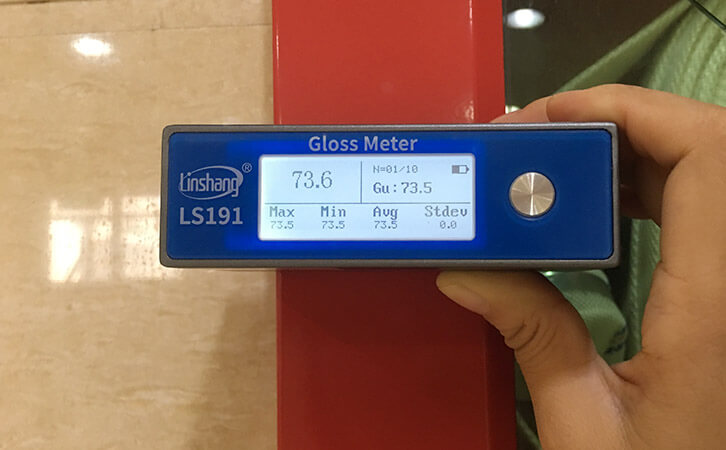Factors Affecting the Gloss Test of the Sprayed Parts | Paint Gloss Meter
The gloss of the sprayed parts is generally measured by the paint gloss meter. The gloss is simply divided into high light, medium light and low light. Under normal circumstances, the human eye can only easily judge the strength of the gloss. In the glossy area, the human eye and the instrument appear to be a linear relationship in the gloss measurement. In the high-gloss area, the strong reflection of the human eye will form a subconscious self-protection, resulting in a visual gloss that is often lower than that measured by the instrument. In the low-gloss area, due to the amount of pigment added or the roughness of the sprayed part surface, the visual gloss is higher than the measured result of the paint gloss meter.
So what are the factors that affect the gloss of the sprayed parts?
The dispersibility of the sprayed parts in the base material. Simply speaking, the finer the raw materials of the sprayed parts, the better the smoothness of the sprayed parts surface. The better the flatness, the higher the smoothness.
The pigment base ratio of the sprayed parts will affect its gloss and the pigment particles will weaken the specular reflection. And as the pigment volume concentration increases, the gloss gradually decreases.
The color of the sprayed parts will affect its gloss, dark absorb the light while white reflect the light. So dark paint will show a high gloss than light paint.
The volatilization speed of various solvents in the sprayed parts will affect the flatness of the paint film appearance, which will reduce the surface paint film gloss.
The angle of incident light also affects the painted part surface gloss. The greater the angle of incidence, the stronger the reflected light will be.
From the above, it can be concluded that there are many factors affecting the sprayed parts surface gloss. Any one of these factors cannot be accurately judged by our eyes. Glossiness must be judged by a precision paint gloss meter. Usually we will use a 60 degree angle paint gloss meter for measurement. However, the 60 degree angle paint gloss meter is suitable for the gloss measurement of 10-70GU. When the measured value is higher than 70GU, it is recommended to use a paint gloss meter with a 20 degree angle, when the measured value is lower than 10GU, it is recommended to use a paint gloss meter with a 85 degree angle.
